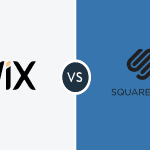Table of Contents
Spending money on advertising is one thing that most business owners do often to boost their business. Spending money on effective advertising that generates results and grows your business is another. Out of home advertising (ooh) has proven and continues to prove that it can be an effective form of marketing to help you grow your business. What many business owners don’t consider or think about when it comes to ooh advertising is how this powerful advertising form can also have a positive impact on your strategy, sales, and ultimately your bottom line. This article will talk about just how ooh advertising works and how it can have a positive effect on your business.
Ooh, advertising is designed to give you an excellent opportunity to reach consumers when they are out of their homes and on the go. This effective style of marketing comes in many different forms. It can consist of billboards to signs posted on mass transit like buses to even sidewalk signs.
Sometimes you will also find ooh referred to as outdoor advertising. The basic fundamental of out of home advertising is that its the process of displaying unique marketing materials outdoors in outdoor venues or spaces that you’ll often find consumers frequenting. In most cases, you’ll find businesses using this type of marketing platform to boost visibility for their business, building brand awareness, and, increasing their overall success.
Today we live in a world where we find billboards dynamically displaying ads targeted to each individual as they’re walking past them. We see ads sold in real-time auctions aggressively and displayed across a city (or country) in a matter of minutes thanks to growing technology. We live in a world where we find outdoor marketing is real-time, thanks in large part to billboards changing dynamically depending on the time of day or weather condition.
We’ve definitely seen this transition changing the traditional out-of-home ad-buying process which used just to be static billboards; the new and improved ooh advertising reduces human intermediaries and slow, manual insertion orders. We now find ourselves moving in the fast lane, and driving towards a reality where machines and technology are programmed to buy ads.
So what are the possibilities with ooh advertising and probably the most critical question you’re asking yourself is how does it work?
Like with all forms of outdoor advertising, advertising comes with some challenges but despite the challenges, you’re still bound to find companies actively exploring new outdoor advertising technology opportunities and then implementing those opportunities in various variations to boost and offer new digital ooh advertising offerings to their customers.
Let’s dive in and know about how it all works:
Targeting
As you can probably imagine, especially with digital ooh advertising it’s not possible to precisely target the ad specifically to just a select audience of a dozen people (and not 100 random viewers). Programmatic ooh advertising, on the other hand at least gives ooh advertising the possibility and chance to display the ad at times when the target audience they are going after is most likely to see it. This offers big-time efficiency gains and ultimately better deals on media.
Measurement
With other forms of advertising like traditional online digital advertising, you’ll find buyers following cookies or device IDs to target an individual consumer. With ooh advertising, on the other hand, location data is pulled from opted-in audiences and is critical for executing advertising in ooh especially digital ooh – along with its planning, targeting, and measurement.
Today we are finding that many ooh media sellers, buyers and vendors are using mobile location data to measure ooh media to find new beneficial ways to grow offerings.
Retargeting
While one of the downfalls to ooh advertising is the inability to target advertisements on an individual basis, you’ll still find that it allows effective mobile retargeting. How you might ask? Ooh, providers of various media can use geofencing, which is basically creating a virtual geographic boundary around a board using GPS or RFID technology (or both) to pin down a unique response when a mobile device like a smartphone enters or leaves the vicinity of aboard.
Higher Ad Engagement
In today’s wacky world of advertising, there’s an opportunity for advertisers and agencies alike to really capitalize on the initial and new opportunities offered by ooh advertising and use them to boost awareness, drive conversions, and deliver results.
We’ve seen over the last decade online display ad engagement has been declining. This has led to click-through rates (CTRs) lower than 1%. While you might find those numbers to be astonishing, a large part of this happening is because of a bombardment of online ads. Along with that, we have also seen a rise of unique software such as ad blockers and phenomenons such as banner blindness.







